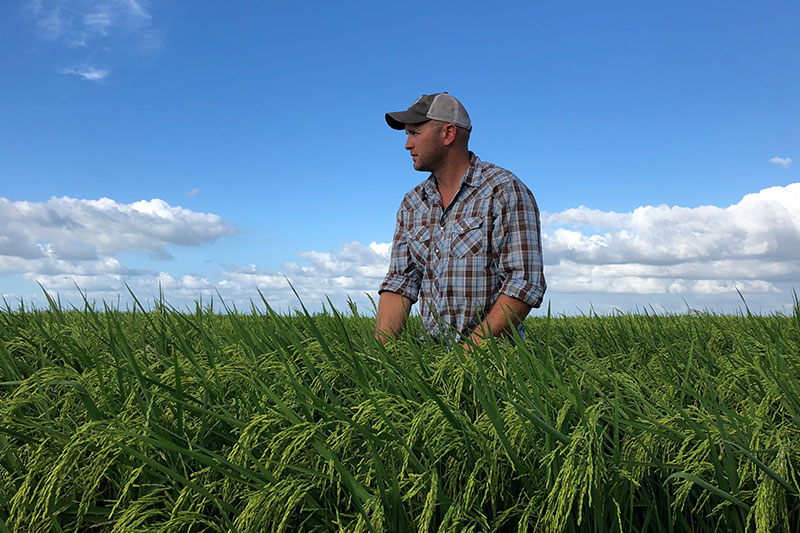
Meet U.S. Rice Farmers

Timothy Gertson
Lissie, Texas
Multi-Generational Farmer
Favorite Rice Dish is Horchata
Timothy Gertson’s farming operation in Wharton County, Texas, is called G5 Farms in recognition of the fact that he is the fifth generation in his family to farm rice there. And it looks as if a sixth generation is coming along as Timothy’s three young sons love to go to work with their dad. Knowing that what he does today has implications for that next generation dictates how Timothy farms. “I take a lot of pride in what I produce and how I produce it. I’m aware that my rice is helping to provide sustenance to the world. This is a blessing and a responsibility that I believe distinguishes farmers as the primary caretakers of our environment.”
Timothy has worked for years to improve his land, repairing dilapidated irrigation wells and canals, and using technology to conserve water wherever possible. He’s willing to take risks and try new practices believing growth never comes to an operation with a stagnant mindset. As he says, “New farmers have to be flexible in their agrarian practices to meet a rising food demand with less labor and less natural resources. Sustainability is our mantra.”
There is growing consumer demand, and even expectation, for products that meet a sustainability standard. The U.S. rice industry has a great sustainability story to tell. Over the past 35 years American rice farmers have increased yields by 53 percent while decreasing usage of land, energy, and water, all without the use of genetically modified organisms (GMOs). Rice fields also serve as important habitat for migratory waterfowl in every rice growing state providing a vital environmental service.
Timothy’s story begins and ends with sustainability. As he says, “I now farm land my ancestors farmed and I’m working to not only grow a nutritious and healthy crop, but also to improve the land so that when I turn it over to my children, they get it better than I did.”
Timothy has worked for years to improve his land, repairing dilapidated irrigation wells and canals, and using technology to conserve water wherever possible. He’s willing to take risks and try new practices believing growth never comes to an operation with a stagnant mindset. As he says, “New farmers have to be flexible in their agrarian practices to meet a rising food demand with less labor and less natural resources. Sustainability is our mantra.”
There is growing consumer demand, and even expectation, for products that meet a sustainability standard. The U.S. rice industry has a great sustainability story to tell. Over the past 35 years American rice farmers have increased yields by 53 percent while decreasing usage of land, energy, and water, all without the use of genetically modified organisms (GMOs). Rice fields also serve as important habitat for migratory waterfowl in every rice growing state providing a vital environmental service.
Timothy’s story begins and ends with sustainability. As he says, “I now farm land my ancestors farmed and I’m working to not only grow a nutritious and healthy crop, but also to improve the land so that when I turn it over to my children, they get it better than I did.”

